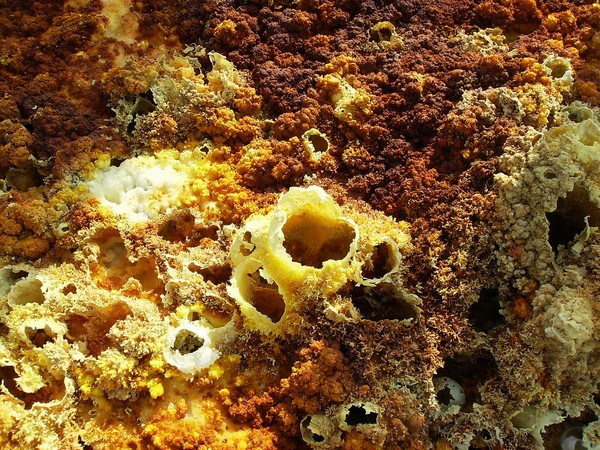A place on Earth with no life?
Earth is known as the only habitable planet in the universe but a recent discovery about a place with no life on the planet might come as shock!

- Country:
- United States
Earth is known as the only habitable planet in the universe but a recent discovery about a place with no life on the planet might come as shock! It would be impossible to imagine a spot on Earth where there is an absence of life, but European researchers have confirmed the non-attendance of microbial life in hot, saline, hyperacid ponds in the Dallol geothermal field in Ethiopia.
The infernal landscape of Dallol, located in the Ethiopian depression of Danakil, extends over a volcanic crater full of salt, where toxic gases emanate and water boils in the midst of intense hydrothermal activity. It is one of the most torrid environments on Earth. There, daily temperatures in winter can exceed 45° C and there are abundant hypersaline and hyperacid pools, with pH values that are even negative.
A recent study which was published earlier this year, pointed out that certain microorganisms can develop in this multi-extreme environment (simultaneously very hot, saline and acid), which has led its authors to present this place as an example of the limits that life can support, and even to propose it as a terrestrial analogue of early Mars. But these fresh findings present a contrary fact and were published in the journal Nature Ecology and Evolution.
"After analysing many more samples than in previous works, with adequate controls so as not to contaminate them and a well-calibrated methodology, we have verified that there's no microbial life in these salty, hot and hyperacid pools or in the adjacent magnesium-rich brine lakes," stressed biologist Lopez Garcia, French National Centre for Scientific Research. "What does exist is a great diversity of halophilic archaea (a type of primitive salt-loving microorganisms) in the desert and the saline canyons around the hydrothermal site," the biologist explained.
This is confirmed by the results of all the various methods used by the team, including the massive sequencing of genetic markers to detect and classify microorganisms, microbial culture attempts, fluorescent flow cytometry to identify individual cells, chemical analysis of brines and scanning electron microscopy combined with X-ray spectroscopy. Garcia alerted that some silica-rich Dallol mineral precipitates may look like microbial cells under a microscope, so what is seen must be analysed well: "In other studies, apart from the possible contamination of samples with archaea from adjacent lands, these mineral particles may have been interpreted as fossilized cells, when in reality they form spontaneously in the brines even though there is no life."
According to the authors, this work "helps to circumscribe the limits of habitability and demands caution when interpreting morphological bio-signatures on Earth and beyond," that is, one should not rely on the apparently cellular or 'biological' aspect of a structure, because it could have an abiotic origin. "In addition, our study presents evidence that there are places on the Earth's surface, such as the Dallol pools, which are sterile even though they contain liquid water," said Garcia.
This means that the presence of liquid water on a planet, which is often used as a habitability criterion, does not directly imply that it has life. (ANI)
(This story has not been edited by Devdiscourse staff and is auto-generated from a syndicated feed.)










